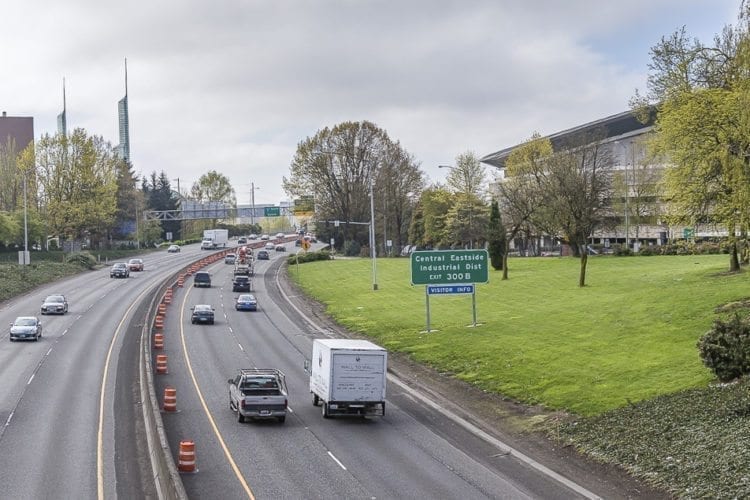Committee members express frustration with the pace of the process as major questions remain
PORTLAND — Assuming there’s no extension, the committee tasked with finding a path to tolls in the Portland area is now past the halfway point. At their fourth of six scheduled meetings this week, the Value Pricing Policy Advisory Committee met to discuss ways to alleviate the impact of tolling on low-income residents.
Video: OregonDOT
The committee members first listened to public comment from a handful of citizens, including John Ley of Camas who wanted to know why it seemed like ODOT staff and consultants, rather than the 25 committee members, seemed to be running the process.
“None of the 25 PAC members got to vote or rank their preferences for the original eight options before they were reduced,” says Ley, also pointing out that an option many of the committee members seemed to like, which would have created added and then tolled a lane on I-5 and I-205, didn’t make it to the current list. “It would have been very easy to give each PAC member a one-page copy of the original eight options, and have the PAC rank them 1-8 in order of priority … but no, instead the staff told the PAC members which were most or least important.”
Paul Savas, a Clackamas County Commissioner and member of the PAC chimed in to agree with Ley, saying it seems as if the committee is simply “steamrolling ahead,” ignoring the reality that many PAC members feel as if their concerns aren’t being heard.
The PAC has two meetings remaining. The next one on May 14 will be to hear analysis of the five current concepts, which will lead to a draft of the final recommendations. Those will be refined and a final course settled on at a meeting June 25, and then the PAC recommendations will be presented to the Oregon Transportation Commission on July 12.
But the purpose of this week’s meeting was to speak more about some options to reduce the impact of tolls on low-income residents, or people who have no option but to use the freeways, such as those who live on Hayden Island.

Some of the ideas discussed at the meeting include credits for people who use mass transit, cheaper off-peak tolls, and possible income tax refunds for people who live in Clark County but work in Oregon. As state law currently stands, that would be the only way people who live on the north side of the Columbia River could qualify for a discount program for tolling in Oregon.
It’s important to note that it could be upwards of a decade before any approved tolling plan is actually ready to be implemented. That was a concern of a number of people on the committee, who worried that there’s a lot of guesswork involved in crafting a plan for that far ahead.
Currently the five options on the table include:
- Toll all lanes on both I-5 and I-205 between the Columbia River and Tualatin.
- Convert the HOV lane on I-5 NB into a tolling lane, and convert one southbound lane into a tolling lane.
- Tolling the Abernathy Bridge along I-205 through Oregon City
- Toll at least one lane both ways between Multnomah Blvd and Going Street on I-5
- Add a new lane both directions between the Abernathy Bridge and Stafford Road on I-205 and then toll the new lane.
The PAC will meet again May 14 to hear further analysis of those options, including possible costs.
One committee member noted that the commission likely also has the power to consider tolls on other Oregon highways, including I-84 and US-26, though it’s unlikely those would be part of the initial process.




